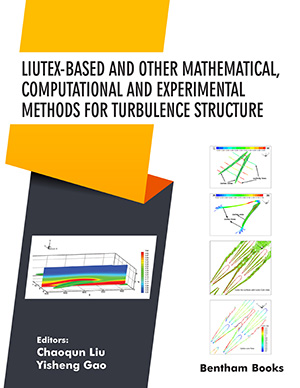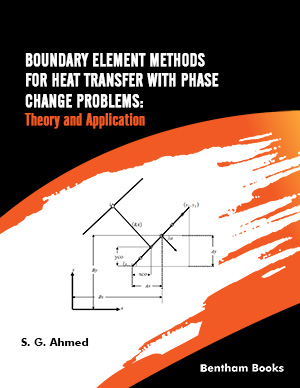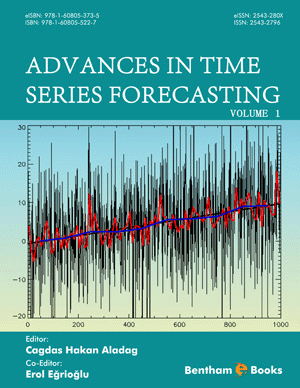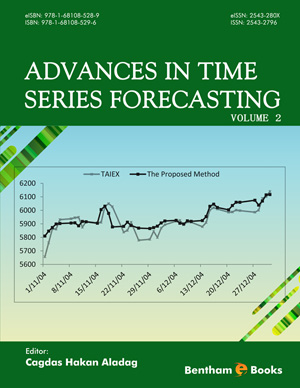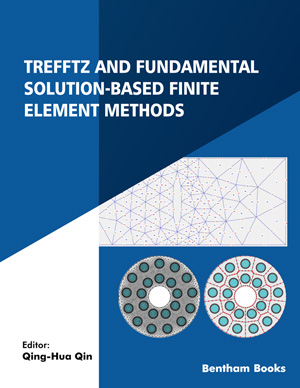Book Volume 2
List of Contributors
Page: vii-viii (2)
Author: Chaoqun Liu and Yisheng Gao
DOI: 10.2174/9789811437601120020002
Liutex – A New Mathematical Definition of Vortex and Vorticity Decomposition for Turbulence Research
Page: 1-20 (20)
Author: Chaoqun Liu, Yisheng Gao and Yifei Yu
DOI: 10.2174/9789811437601120020003
PDF Price: $30
Abstract
For a long time, people recognize a vortex as a vorticity tube and measure the vortex rotation strength by vorticity magnitude. These misunderstandings have been carried out by thousands of research papers and almost all textbooks. It has been found that the association between regions of strong vorticity and actual vortices can be rather weak. Accordingly, many vortex identification criteria have been proposed. However, the vortex still has no rigorous mathematical definition and the relationship between the vortex and the vorticity is still not clear. Because we do not have a definition for the vortex, there exists no vortex science. Since the vortex is the building block and the muscle of turbulence, the lack of the mathematical definition for the vortex becomes a bottleneck for turbulence research. Actually, there is no serious turbulence research without the definition of the vortex. In our recent work, a mathematical definition called Liutex (previously called Rortex) is introduced to identify the rigid rotation of fluid motion. Liutex is a local mathematical vector definition with the direction and magnitude of pure rotation without shear contamination, which is unique and Galilean invariant. The Liutex direction is defined as the local rotation axis and the Liutex magnitude is the local rotation strength. More importantly, we derive the accurate mathematical relation between the vorticity and the vortex, which is Vorticity= Liutex + Antisymmetric Shear (RS decomposition). This new discovery is an important breakthrough in modern fluid dynamics and is extremely important for turbulence research. In addition, the velocity gradient tensor has been decomposed to two parts, R (rigid rotation) and NR (non-rotation part) as a counterpart of the traditional Cauchy- Stokes decomposition which is improper since the vorticity cannot represent flow rotation. Liutex is a new physical quantity like velocity, vorticity, temperature, pressure, which has been ignored by our founding fathers of fluid dynamics for centuries but is particularly important for vortex dynamics and turbulence research. The introduction of Liutex, RS decomposition of vorticity, and R-NR decomposition of the velocity gradient tensor would open a new era for vortex dynamics and new turbulence research, likely new fluid dynamics.
Liutex and Its Calculation and Galilean Invariance
Page: 21-44 (24)
Author: Yiqian Wang, Yisheng Gao and Chaoqun Liu
DOI: 10.2174/9789811437601120020004
PDF Price: $30
Abstract
The Liutex (previously known Rortex) method introduces a vortex vector field to mathematically and systematically describe vortices in flow fields. In this study, the previous calculation procedures of Liutex which includes a two-step reference coordinate rotation is revisited first. An explicit formula to calculate Liutex is then derived and the physical intuition and efficiency improvement brought by this formula are discussed. It is estimated that the computation time of Liutex vector from velocity gradient field can be reduced by 36.6% compared with that of the previous method. Besides, the Galilean invariance widely accepted as a preliminary check for a successful vortex identification method is discussed for Liutex vector.
New Omega Vortex Identification Method Based on Determined Epsilon
Page: 45-58 (14)
Author: Xiangrui Dong, Yisheng Gao and Chaoqun Liu
DOI: 10.2174/9789811437601120020005
PDF Price: $30
Abstract
A new Omega (Ω) method with ε determination is introduced to represent the ratio of vorticity square over the sum of vorticity squared and deformation squared, for vortex identification. the advantages of the new Ω method can be summarized as follows: (1) Ω, as a ratio of the vorticity squared over the sum of the vorticity squared and deformation squared, is a normalized and case-independent function which satisfies Ω ∈[0,1]; (2) Compared with the other vortex visualization methods, which require a wide threshold to capture the vortex structures, Ω can always be set as 0.52 to capture vortex for different cases and time steps; (3) ε is defined as a function without any adjustment on its coefficient for all cases; (4) The Ω method can capture both strong and weak vortices simultaneously. In addition, Ω is quite robust with no obvious change in vortex visualization.
Stability Analysis on Shear Flow and Vortices in Late Boundary Layer Transition
Page: 59-114 (56)
Author: Jie Tang
DOI: 10.2174/9789811437601120020006
PDF Price: $30
Abstract
Turbulence is still an unsolved scientific problem, which has been regarded as “the most important unsolved problem of classical physics”. Liu proposed a new mechanism about turbulence generation and sustenance after decades of research on turbulence and transition. One of them is the transitional flow instability. Liu believes that inside the flow field, shear (dominant in laminar) is unstable while rotation (dominant in turbulence) is relatively stable. This inherent property of flow creates the trend that non-rotational vorticity must transfer to rotational vorticity and causes the flow transition. To verify this new idea, this chapter analyzed the linear stability on two-dimensional shear flow and quasi-rotational flow. Chebyshev collocation spectral method is applied to solve Orr–Sommerfeld equation. Several typical parallel shear flows are tested as the basic-state flows in the equation. The instability of shear flow is demonstrated by the existence of positive eigenvalues associated with disturbance modes (eigenfunctions), i.e. the growth of these linear modes. Quasi-rotation flow is considered under cylindrical coordinates. An eigenvalue perturbation equation is derived to study the stability problem with symmetric flows. Shifted Chebyshev polynomial with Gauss collocation points is used to solve the equation. To investigate the stability of vortices in flow transition, a ring-like vortex and a leg-like vortex over time from our Direct Numerical Simulation (DNS) data are tracked. The result shows that, with the development over time, both ringlike vortex and leg-like vortex become more stable as Omega becomes close to 1.
POD and DMD Analysis in Late Flow Transition with Omega Method
Page: 115-153 (39)
Author: Sita Charkrit and Chaoqun Liu
DOI: 10.2174/9789811437601120020007
PDF Price: $30
Abstract
In this paper, the proper orthogonal decomposition (POD) and dynamic mode decomposition (DMD) are applied to analyze the 3D late transitional flow on the flat plate obtained from direct numerical simulation (DNS). POD is used to find the most persistent spatial structures while DMD is used to find single frequency modes. The Omesga method is applied as a vortex identification to visualize vortices with isosurfaces Ω = 0.52. The results in POD and DMD are discussed and compared to show the same and different features such as shapes, amplitudes and time evolutions.
Comparison of Liutex and Eigenvalue-based Vortex Identification Criteria for Compressible Flows
Page: 154-175 (22)
Author: Yisheng Gao and Chaoqun Liu
DOI: 10.2174/9789811437601120020008
PDF Price: $30
Abstract
Currently, the Q criterion, theΔ criterion and the λci criterion are representative among the most widely used vortex identification criteria. These criteria can be categorized as eigenvalue-based criteria since they are exclusively determined by the eigenvalues or invariants of the velocity gradient tensor. However, these criteria are not always satisfactory and suffer from several defects, such as inadequacy of identifying the rotational axis and contamination by shearing. Recently, a novel concept of Liutex (previously named Rortex), including the scalar, vector and tensor form, was proposed to overcome the issues associated with the eigenvalue-based criteria. In the present paper, the comparison of Liutex and two eigenvalue-based criteria, namely the λ ci criterion and the QD criterion, a modification of the Q criterion, is performed to assess these methods for compressible flows. According to the analysis of the deviatoric part of the velocity gradient tensor, all the scalar, vector and tensor forms of Liutex are valid for compressible flows without any modification, while two eigenvalue-based criteria, though applicable to compressible flows, will tend to be severely contaminated by shearing as for incompressible flows. Vortical structures induced by supersonic microramp vortex generator (MVG) at Mach 2.5 are examined to confirm the validity and superiority of Liutex for compressible flows.
Observation of Coherent Structures of Low Reynolds Number Turbulent Boundary Layer by DNS and Experiment
Page: 176-209 (34)
Author: Panpan Yan, Chaoqun Liu, Yanang Guo and Xiaoshu Cai
DOI: 10.2174/9789811437601120020009
PDF Price: $30
Abstract
An elaborate direct numerical simulation (DNS) for late boundary layer transition has been conducted. The DNS results are qualitatively compared with a new Lagrangian property experimental technique named the moving single-frame and longexposure (MSFLE) imaging method to obtain a deeper understanding on the coherent structures of a transitional and turbulent boundary layer at low Reynolds number. Multilevel vortex structures are clearly observed by both experiment and DNS. This study found that there are multilevel co-rotating vortices, showing how energy is transported from the main flow to the bottom of the boundary layer and how the streaks or whiteblack strips are formed. The results also show that the lower level vortices cannot simply be produced by the upper-level vortex inducement. There are multilevel hairpin vortex ejections and sweeps inside the boundary layer of the transitional and low Reynolds number turbulent flows. The ejections and sweeps are much stronger around the hairpin legs and necks than those in the ring area. This clearly shows that the ring-like vortices are the production of the strong vortex neck rotation. In conjunction with ejections and sweeps, a lot of strong shear layers are produced. Because fluid cannot tolerate the strong shear, the shear layer must turn to rotation and form many vortices. This would help reveal the mechanism of multilevel vortices and turbulence generation. Although the upper-level vortices could be larger than the lower ones, the lower level vortices sometimes have the same size as the neighboring upper-level vortices. The vortex cascade and large vortex breakdown are not observed by either DNS or experiment.
Direct Numerical Simulation of Incompressible Flow in a Channel with Rib Structures
Page: 210-231 (22)
Author: Ting Yu, Duo Wang, Heng Li and Hongyi Xu
DOI: 10.2174/9789811437601120020010
PDF Price: $30
Abstract
This chapter applied the state-of-the-art flow simulation method, i.e. the Direct Numerical Simulation (DNS), and strongly coupled the DNS with the heat-transfer governing equation to solve the thermal turbulence in both 2-dimensional (2D) and 3- dimensional (3D) channels with the rib tabulator structures. An innovative approach was applied to the simulations. The surface roughness effects of the cooling vane were directly tackled by including the roughness geometry in the DNS and applying the immersedboundary method to handle the geometry complexities due to the roughness. Two inlet conditions, namely the uniform flow and full-developed turbulence, were applied at the inflow surface of the channel. Half height of the channel was used as the scale length. The Prandtl (Pr) number was set at Pr = 0.7. Five Reynolds (Re) number of 1000, 2500, 5000, 7500 and 10000 were calculated in the 2D cases and the Reynolds numbers of 2500 and 5000 were applied in 3D cases where a periodical condition was applied in the spanwise direction. Additionally, Reynolds number of 10000 was set in the case with roughened surface. The stream-wise velocity, turbulence intensity, and the Nusselt (Nu) number were analyzed. Results in the 2D and 3D cases presented a significant difference on flow structure. At the same time, with increasing Reynolds number, the length of recirculation zone and the enhancement of heat transfer showed a decreasing trend.
Vortex and Flow Structure inside Hydroturbines
Page: 232-242 (11)
Author: Yuning Zhang
DOI: 10.2174/9789811437601120020011
PDF Price: $30
Abstract
In this chapter, various kinds of vortex in the hydroturbines are briefly introduced with a focus on the swirling vortex rope in Francis turbine and the vortex in the vaneless space of the reversible pump turbine. The vortex induced pressure fluctuation and vibrations are initially demonstrated based on the on-site measurement in the prototype power stations. Then, influences of the vortex in the upstream on the flow status in the downstream are discussed. Finally, detailed characteristics of the swirling vortex in the draft tube section of the hydroturbines are demonstrated based on the plenty of examples together with the aid of a quantitative swirl number analysis.
A Comparative Study of Compressible Turbulent Flows Between Thermally and Calorically Perfect Gases
Page: 243-264 (22)
Author: Xiaoping Chen
DOI: 10.2174/9789811437601120020012
PDF Price: $30
Abstract
In this chapter, direct numerical simulations (DNSs) of compressible turbulent flows for thermally perfect gas (TPG) and calorically perfect gas (CPG), including two wall temperature of 298.15K (low temperature condition) and 596.30K (high temperature condition), are performed to investigate the influence of a gas model on the turbulent statistics and flow structures. The results show that the influence of TPG is negligible and remarkable for low and high-temperature conditions, respectively. Many of the statistical characteristics used to express low-temperature conditions for CPG still can be applied to high-temperature conditions for TPG. The smaller the influence of the gas model on the mean and fluctuating velocity, the stronger the Reynolds analogy. The static temperature for TPG is smaller than that for CPG, whereas an inverse trend is found for turbulent and root square mean Mach numbers. Omega could capture both strong and weak vortices simultaneously for compressible flow, even TPG, which is difficult from Q. Compared to the results of CPG, the vortex structure becomes smaller, sharper and more chaotic considering TPG.
The Experimental Study on Vortex Structures in Turbulent Boundary Layer at Low Reynolds Number
Page: 265-279 (15)
Author: Yanang Guo, Xiaoshu Cai, Wu Zhou, Lei Zhou and Xiangrui Dong
DOI: 10.2174/9789811437601120020013
PDF Price: $30
Abstract
Experiments with a moving single-frame and long-exposure (MSFLE) imaging method, which is a Lagrangian-type measurement, is carried out to study the vortex structures in a fully developed turbulent boundary layer at low Reynolds number on a flat plate. In order to give the process of the vortex generation and evolution, on the one hand, the measurement system moves at the substantially same velocity as the vortex structure; on the other hand, a long exposure time is selected for recording the paths of the particles. In the experiment, the vortex structure characteristics as well as the temporal-spatial development can be shown by the streamwise-normal (x-y)-plane and streamwise-spanwise (x-z)-plane images which are extracted from a fully developed turbulent boundary layer. The result shows that the interaction between high- and low-speed streaks induces the generation, deformation and ‘breakdown’ of the vortex structures, and badly influences the vortex evolution.
Experimental Studies on Coherent Structures in Jet Flows Using Single-Frame-Long-Exposure (SFLE) Imaging Method
Page: 280-292 (13)
Author: Lei Zhou, Xiaoshu Cai, Wu Zhou and Yiqian Wang
DOI: 10.2174/9789811437601120020014
PDF Price: $30
Abstract
On the axisymmetric water jet experimental apparatus, the flow field structures in entrainment boundary layers are measured using Single Frame Long Exposure image method, in the range of Reynolds number (Re) 1849~2509. It is found that engulfing and nibbling entrainment model occur intermittently with time, in the region of L=2~3.5d streamwise and H=1~1.25d radial direction. It concludes that the occurrence probability of engulfing increases with Reynolds number when Re>1915, the influence of Reynolds number on the occurrence probability of this structures decreases when Re>2311; the occurrence frequency of this coherent structures obtained by fast Fourier transform is between 10 and 19Hz; special vortex structures were observed in the flow field during the occurrence of engulfing. The jet flow field is measured using Moving Single Frame Long Exposure image method in Lagrangian coordinate system, and it is found that the vortex structures generally exist near the interface of turbulent regions and non-turbulent regions.
Hybrid Compact-WENO Scheme for the Interaction of Shock Wave and Boundary Layer
Page: 293-311 (19)
Author: Jianming Liu and Chaoqun Liu
DOI: 10.2174/9789811437601120020015
PDF Price: $30
Abstract
In this chapter, an introduction to hybrid Weighted Essentially non-oscillatory (WENO) method is given. The hybrid techniques including both central and compact finite difference schemes are introduced. The paper review about the driven mechanism of the high order finite scheme required for compressible flow with shock is presented. The detailed constructing processes of the compact and WENO schemes are given and the hybrid detector is introduced. Further, in particular, a series of examples in the field of the compressible flow are designed to illustrate the different methods.
Subject Index
Page: 312-323 (12)
Author: Chaoqu Liu and ̀Yisheng Gao
DOI: 10.2174/9789811437601120020016
Introduction
The knowledge of quantitative turbulence mechanics relies heavily upon the definition of the concept of a vortex in mathematical terms. This reference work introduces the reader to Liutex, which is an accepted, accurate and mathematical definition of a vortex. The core of this book is a compilation of several papers on the subject. presented in the 13th World Congress of Computational Mechanics (WCCM2018), Symposium 704, Mathematics and Computations for Multiscale Structures of Turbulent and Other Complex Flows, New York, United States on July 27, 2018. This compilation also includes other research papers which explain the work done on the vortex definition, vortex identification and turbulence structure from different insight angles including mathematics, computational physics and experiments. The thirteen chapters in this volume will be informative to scientists and engineers who are interested in advanced theories about fluid dynamics, vortex science and turbulence research.


